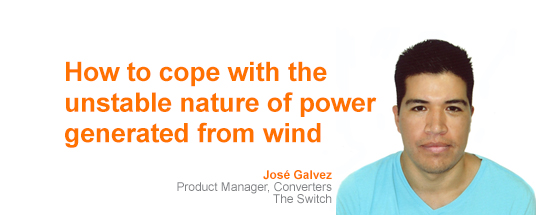Good news for a cleaner world – but what are the steps we can take now to grow the share of renewables in the face of tougher grid codes?
According to the European Commission’s Renewable Energy Progress Report 2017, it’s estimated that renewable sources provided 16.4% of consumption in 2015. This means that the EU goal of achieving 20% by 2020 is well on track. Renewables have also contributed to energy security by creating considerable savings in fossil fuel imports – up to €16 billion in 2015. This highlights the important role of renewables, not just in the energy market, but in the economy as a whole. The results are so promising that the EU has set new goals for 2030, which I hope will be fulfilled in advance as well.
An increasing renewable contribution is good news for everybody. Nevertheless, there is a small downside. The fluctuating nature of power generated from wind and solar imposes difficulties in stable electrical transmission. The grid has become more active, due to the necessary energy conversion by power electronics. Consequently, there is a faster dynamic between generation and demand. The upcoming electrical car revolution will also add interesting new variables to electrical consumption.
How to cope with this challenge? Energy storage is the first thing that comes to mind, but unfortunately, technology is not yet there. In order to tackle the problem robustly, we need higher energy storage capacity than what is technically feasible today.
Naturally, we are not waiting until we get the right energy storage capacity. Efforts are already underway that show the path forward. Several companies are currently working in wind-battery and solar-battery integration, as well as hybridization of diesel power plants.
Batteries and other energy storage concepts will eventually provide a reliable solution. Meanwhile, stricter grid codes have to define the rules for safer interconnection of an increasing renewable contribution. This opens the door for new control approaches and fresh terminology.
We are starting to see exactly that. The EU released grid code NC RfG in May 2016. This resolution is an attempt to harmonize codes and update requirements for present-day grid conditions – strengthening EU plans already in place to define rules for cross-border electricity exchange. This will guarantee reliable and efficient electrical network operation. Regardless of the label resolution, I see the document more as the definition of a common framework for modern grid code development. The majority of requirements are not necessarily binding, so they are still subject to the decisions of individual EU states.
Worthy of mention here is how the resolution categorizes power generating plants, based on power and voltage, and from type A to type D. The requirements of each power plant type will be set in terms of response to transients and the ability to avoid propagation of faults. Being type C is the most demanding for connections below 110 kV. Throughout this grid code, concepts or phrases such as “frequency sensitive mode,” “synthetic inertia” and “under-frequency support” can be spotted. How big of a role will wind turbine inertia play in grid stabilization?
Food for thought. This is the beginning of the arrival of very interesting requirements.
When talking grid codes, Germany is known to be the forerunner. In January 2015, the country released VDE-AR-N 4120:2015–0, rules for connection in a high-voltage network. Here we see crystallized the high voltage fault ride-through (HVFRT) requirements. These rules updated Transmission Code 2007 and will be the reference document for the medium voltage level code, which is now just the draft E VDE-AR-N 4110:2017–03, expected to be published in 2017. When published, it will become the reference for the update of BDEW (Bundesverband der Energie und Wasserwirtschaft) 2008.
China and India are updating the requirements in GB/T 1963–2011, a Chinese national voluntary standard, and CEA, Central Electricity Authority of India, respectively. HVFRT requirements are present, and CEA goes further by defining ESS requirements for wind parks above 10 MW.
From our side, we are on the front line. Recently our colleagues have been on site testing HVFRT functionality. Despite great results, we take it with a grain of salt for there is still plenty to improve.
The message for me is clear – technological development will not settle down. We will continue striving for better solutions. The renewable energy industry seems to be on a ride that doesn’t wait for latecomers. So, it is essential to stay proactive and open-minded about innovative ideas.
Now is time for the industry to bring the best of our technology to the table and, regardless of market share and results, the ultimate outcome will be a less polluted world.
Learn more about advanced PMG-based technology drive trains for wind
José Galvez, Product Manager, Converters, The Switch
